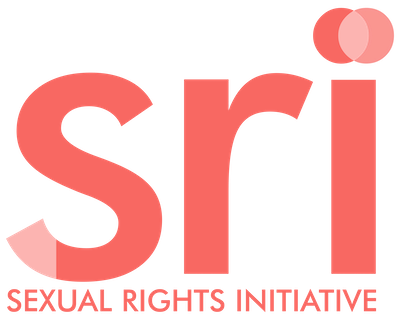Session
National Report
Para 41) India does not tolerate any form of impunity for violence against minorities, women, children, marginalised communities and other vulnerable groups. While addressing multiplicity of disadvantages, the Supreme Court of India in Patan Jamal Vali v. State of Andhra Pradesh observed that “when the identity of a woman intersects with, inter alia, her caste, class, religion, disability and sexual orientation, she may face violence and discrimination due to two or more grounds. In such a situation, it becomes imperative to use an intersectional lens to evaluate how multiple sources of oppression operate cumulatively to produce a specific experience of subordination for a blind Scheduled Caste woman.” Similarly, in Shakti Vahini v. Union of India and Others the Court laid down preventive and remedial measures to tackle the issue of honour killing; and in Tehseen S. Poonawalla v. Union of India the Court laid down measures against cow vigilantism.
Para 103) Based on the recommendations of the Justice Verma Committee, Government has made various amendments in Criminal Laws relating to sexual harassment including in the Indian Penal Code, Code of Criminal Procedure, Indian Evidence Act and POCSO Act. In addition, The Criminal Law Amendment Act, 2018 introduced the measures like enhanced punishment for rape of a girl below the age of 12 years, expeditious investigation, payment of fine by the perpetrator to be given to the victim to meet her medical expenses and secure rehabilitation. The Muslim Women (Protection of Rights on Marriage) Act, 2019 made the pronouncement of triple talaq by Muslim husbands a cognizable offence compoundable at the instance of the married Muslim woman upon whom talaq is pronounced. Para 104) The question of constitutionality of legal provisions on marital rape has recently been challenged before the Supreme Court of India. However, in Independent Thought v. Union of India, the Supreme Court has already read down the provision by holding that marital rape does not stand as an exception where the wife is below 18 years of age.
Para 105) Regarding the issue of honour killing, the Supreme Court of India in Shakti Vahini v. Union of India held that the “right needs to be protected and it cannot succumb to the conception of class honour or group thinking.” Also the Court has laid down preventive, punitive and remedial measures to address the issue of honour killing. Accordingly, the Government issued an advisory to setting up of Special Cells in sensitive districts with 24*7 helpline to receive and register complaints and to provide necessary assistance.
Para 110) Various steps have been taken at the operational level to effectively tackle the problem of violence against women. Pan-India Emergency Response Support System provides for dispatch of field resources to the location of distress. One Stop Centres provide integrated services to women affected by violence. As of March 2022, there are 708 operational centres that have assisted over 540,000 women.
Para 111) The issue of domestic violence has been addressed through the effective implementation of the Protection of Women from Domestic Violence Act, 2005. The National Commission for Women has a special NRI Cell to deal with complaints arising out of cross-country marriages involving deprivation of women’s rights.
Para 112) A 24x7 toll free Women Helpline has been established throughout India to facilitate crisis and non-crisis intervention to women seeking support, which assisted over 7 million beneficiaries. National level Investigation Tracking System for Sexual Offences has been established to monitor and track time-bound investigation in sexual assault cases. National level database on sexual offenders was launched in 2018 to facilitate investigation and tracking of sexual offenders across the country by law enforcement agencies. A cyber-crime portal has also been launched for citizens to report obscene content. In order to make public transportation safe for women, Indian Railways has approved a plan to install Internet Protocol (IP) based Video Surveillance System at stations. Compensation Scheme for Women Victims/Survivors of Sexual Assault/Other Crimes, 2018 provides for compensation to women victims of identified gender-based crimes and victims of child sexual abuse. SheBox, an online complaint management system has been established, to provide a single window access to every woman for registration of complaints related to sexual harassment at workplace.
State under Review
National Report
Stakeholder Summary
Para 122) AI stated that discrimination and violence against women and girls were pervasive. Stigma and discrimination from police officials deterred women from reporting gender-based violence.
Para 123) JS19 stated that a significant proportion of Scheduled Castes and Scheduled Tribes women consistently faced verbal abuse, physical assault, sexual harassment and assault, domestic violence and rape, sexual exploitation, forced prostitution, kidnapping and abduction, forced incarceration and medical negligence.
Para 163) JS4 stated that trans persons, especially poorer trans women, were vulnerable to police violence.
Stakeholder Summary
UN Compilation
UN Compilation
Para 17) … The CRPD was concerned about the prevalence in institutions, including childcare facilities, of inherent forms of violence and ill-treatment, including physical and chemical restraints, forced medication, coercion, physical abuse, humiliation, electroconvulsive therapy, shackling, forced labour and corporal punishment, which particularly affected children with disabilities, persons with intellectual or psychosocial disabilities and women with disabilities.
Para 112) … While instances of gender-based violence affecting refugee and asylum-seeking women and girls had reduced, …
